Gingers are famous all over the world. They are a great addition to your garden, especially as companions to other crops. Similarly, other crops can also benefit ginger in several ways.
Some good companions of ginger plants are bell peppers, chili peppers, turmeric, cilantro, hibiscus, and nasturtiums. You may add some leafy green vegetables like spinach or kale. Avoid walnuts, tomatoes, and eggplants, as these can hamper the growth of your ginger plant.
There are several companions for ginger which I will share in this article. I will also explain why these companions are ideal for ginger plants and how they benefit from each other.
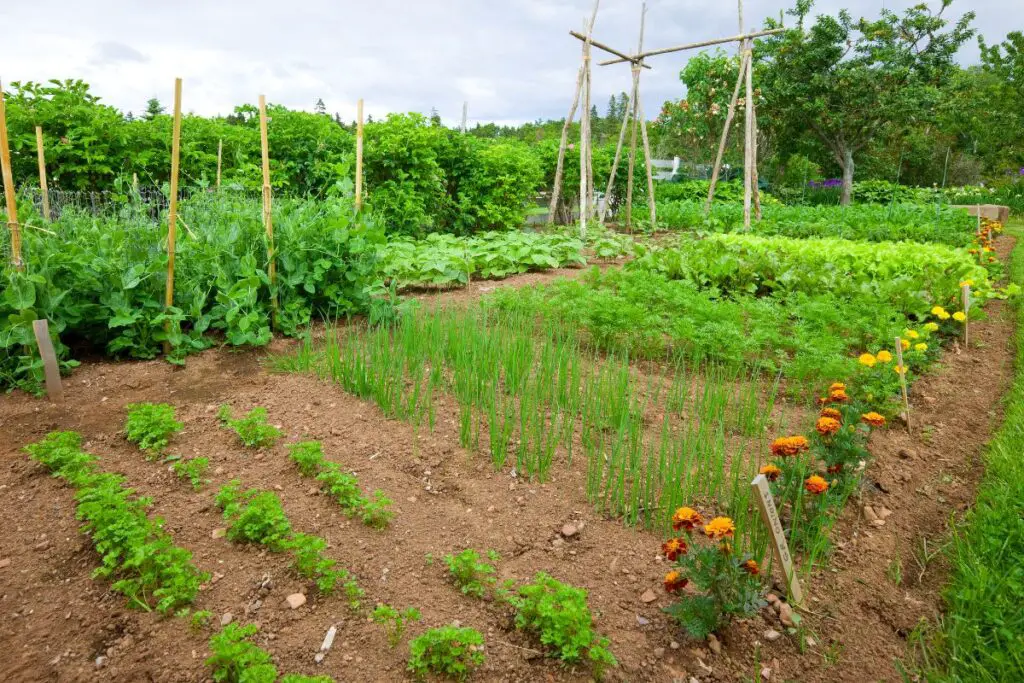
Benefits of planting companions with ginger
Growing different crops together helps in many ways.
Let’s look at some good sides of growing companions:
Repelling pests
Many plants like lavender or marigold have a strong smell which bugs hate.
If the ginger plants are prone to pests, these repellent plants can keep bugs away.
Ginger’s pungent smell also helps in deterring a lot of pests.
This way, ginger, and the companion will be useful to each other.
Shade regulation
Gingers love to grow under partial or full shade.
So, to help gingers get filtered sunlight, plant some sun lovers near ginger to block it from reaching ginger.
Some sun-loving companions are lavender, garlic, chili peppers, and cilantro.
Planting these with ginger can protect ginger plants from direct sunlight.
Natural supporters
Adding some low-growing plants can use ginger for natural support.
For example, peas have a spreading habit and can take support of the ginger plants to remain in shape.
Improves soil health
Sometimes the soil absorbed by a particular plant can change the soil’s biochemistry.
It further helps the other planted plants in the same area.
Improves soil fertility
A lot of vegetable plants can improve soil fertility by releasing nitrogen.
Plants like legumes, beans, and peas release nitrogen into the soil.
Plants with long taproots absorb the nutrients from the soil and release them to nearby shallow-rooted plants.
Since gingers don’t have an extensive root system, they can benefit from these plants.
Looking for gardening supplies? We have tested 100's of products before recommending them to you guys. Check out our best pick below:
| Image | Gardening Supplies | Best Price? |
|---|---|---|
 Top
Top Top
Top | Raised Garden Bed Kit | Check On Amazon |
 | XLUX Soil Moisture Meter, Plant Water Monitor, Soil Hygrometer Sensor for Gardening, Farming, Indoor and Outdoor Plants, No Batteries Required | No Results |
 Top
Top Top
Top | 82 Pcs Garden Tools Set and Extra Succulent Tools Set | Check On Amazon |
 | Joeys Garden Expandable Garden Hose with 8 Function Hose Nozzle, Lightweight Anti-Kink Flexible Garden Hoses, Extra Strength Fabric with Double Latex Core, (50 FT, Black) | No Results |
 Top
Top Top
Top | Dual Chamber Compost Tumbler | Check On Amazon |
 Top
Top Top
Top | Sunnyglade Plant Stakes | Check On Amazon |
 Top
Top Top
Top | Organic Cold Pressed Neem Seed Oil | Check On Amazon |
 Top
Top Top
Top | Mighty Mint Gallon :-Insect and Pest Control Peppermint Oil | Check On Amazon |
 Top
Top Top
Top | Scotts DiseaseEx Lawn Fungicide | Check On Amazon |
 Top
Top Top
Top | Jacks Classic 20-20-20 All Purpose Fertilizer | Check On Amazon |
 Top
Top Top
Top | 30,000 Seeds Pollinator Attracting Wildflower Mixture | Check On Amazon |
 Top
Top Top
Top | Survival Vegetable Seeds Garden Kit-Over 16,000 Seeds | Check On Amazon |
Weed control
Many crops and groundcovers can help suppress weed growth and keep the gingers healthy.
Weeds will absorb all the nutrients and moisture, and ginger will not get any of them.
As a result, gingers won’t develop well.
Growing plants like potatoes or spinach are groundcovers and can suppress weed growth in your garden.
What should I plant with ginger?
There are many companion options to plant with ginger.
Below I have enlisted the best companions for gingers, and the benefits ginger and companions can get from each other:
Bell peppers
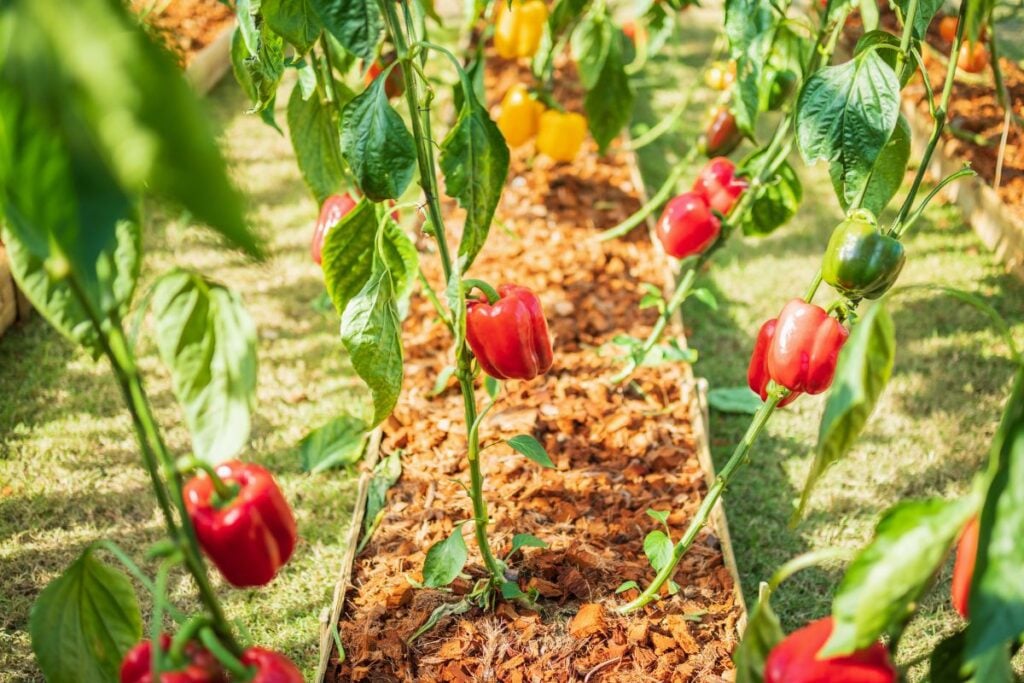
Bell peppers are the same as chili peppers.
The former is green, and the latter is red.
Bell peppers will enjoy full sun, and gingers love to grow under filtered or partial shade.
Bell peppers reach a height of around 3-6 feet.
So, planting them close to ginger can create shade for the ginger plants.
On the other hand, your bell peppers will get the adequate light needed for their growth.
Chili pepper
Chili peppers and ginger plants are great companions for each other.
Planting them close to each will be great for both plants.
Chili peppers need sunlight to thrive.
So, plant them with ginger in a direction where direct sunlight reaches the bed.
In that way, the pepper plant can receive direct sunlight and block it from reaching the ginger bed.
Gingers have a pungent smell that many bugs do not enjoy.
If you plant as a companion of chili pepper, your chili peppers will remain safe from pest infestation.
So, chili pepper remains pest-free due to ginger, and ginger receives shade from the scorching sun.
Thus, they are a great companion to each other.
Cilantro
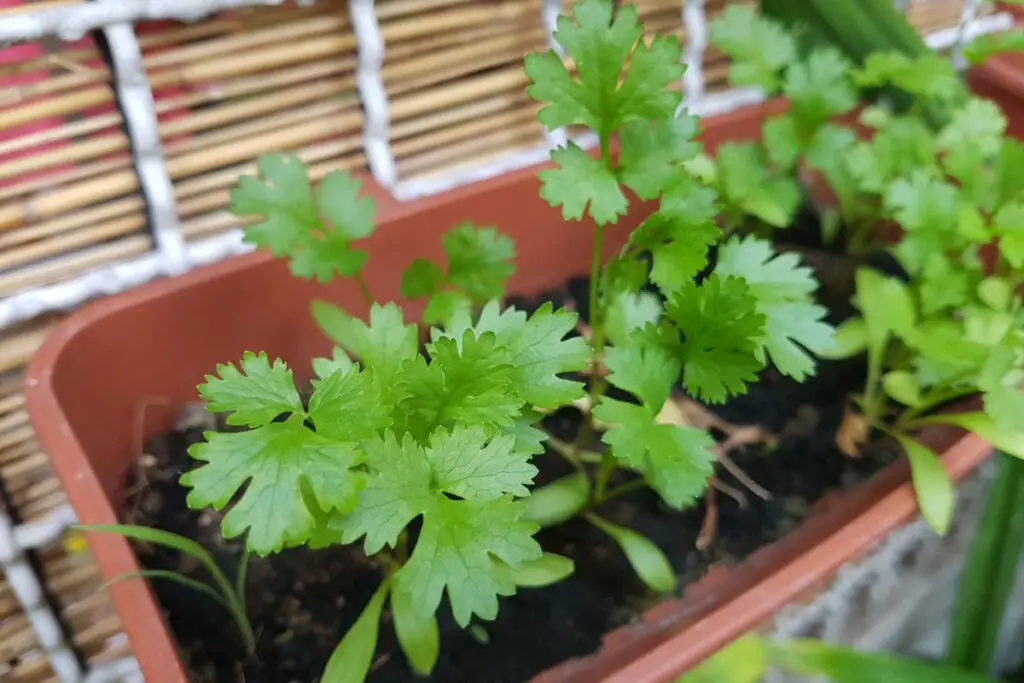
Cilantro and gingers are present in all kitchens and used in all cuisines to increase the taste of the dishes.
Planting cilantro and ginger side by side save you time and effort.
Both can be grown in the same type of soil and climate.
Besides, planting cilantro beside ginger where sunlight reaches the most can save the gingers from direct sunlight.
Fruit trees or shrubs
Fruit trees and shrubs are outstanding companions.
The trees or shrubs can make a suitable location for gingers because they can give shade to the plant.
Gingers enjoy filtered light or partial shade to thrive in the long run.
So, the trees or shrubs can be a great companion to ginger.
But you must ensure that the sunlight penetrates the canopy of these trees for adequate growth.
Grow ginger under these trees or beside them, where you can find some shade for your vegetable.
Garlic
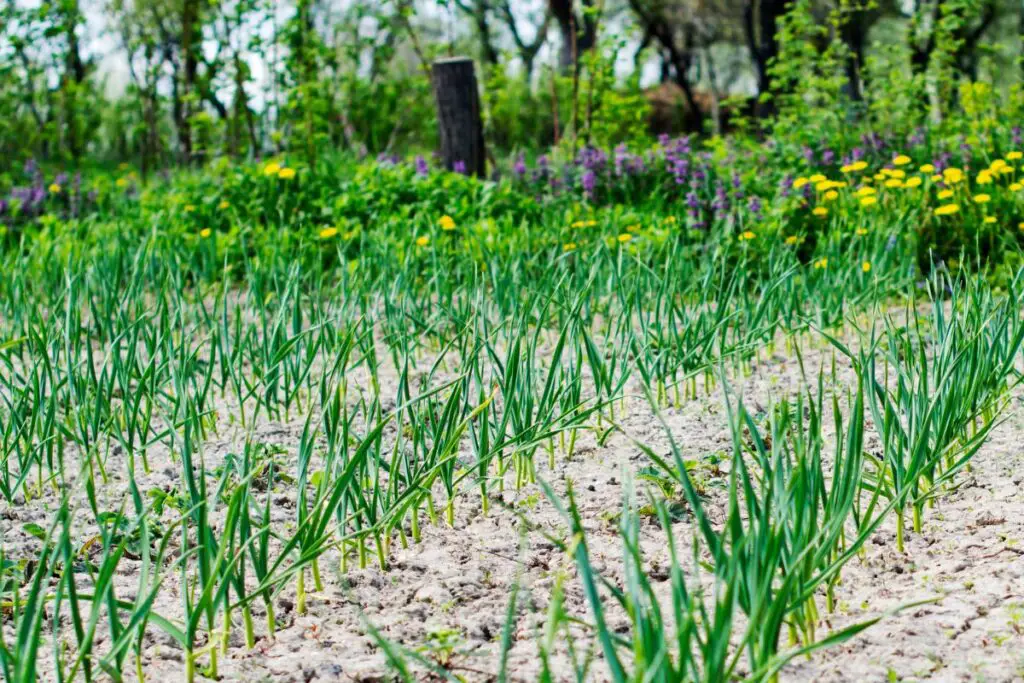
Garlic is another famous vegetable in every kitchen and is useful for culinary and medicinal purposes.
Garlic doesn’t require a lot of space to grow.
Garlic and ginger work excellently in several recipes to increase the taste of dishes.
Both have strong smells and can help each other in repelling bugs.
Garlic loves full, but gingers love the partial shade.
So, garlic plants can provide some shade to your gingers.
Garlic also helps to enhance the aroma of gingers.
Hibiscus
Hibiscus can be a great companion for ginger plants.
Both thrive best in well-drained fertile soil and must remain moist most of the time.
Hibiscus loves full sun for 6-8 hours.
So planting it close to the ginger plants can give gingers shade and get adequate sunlight throughout the day.
At the same time, the smell of ginger plants can deter pests and keep the hibiscus plants bug-free.
Lavender
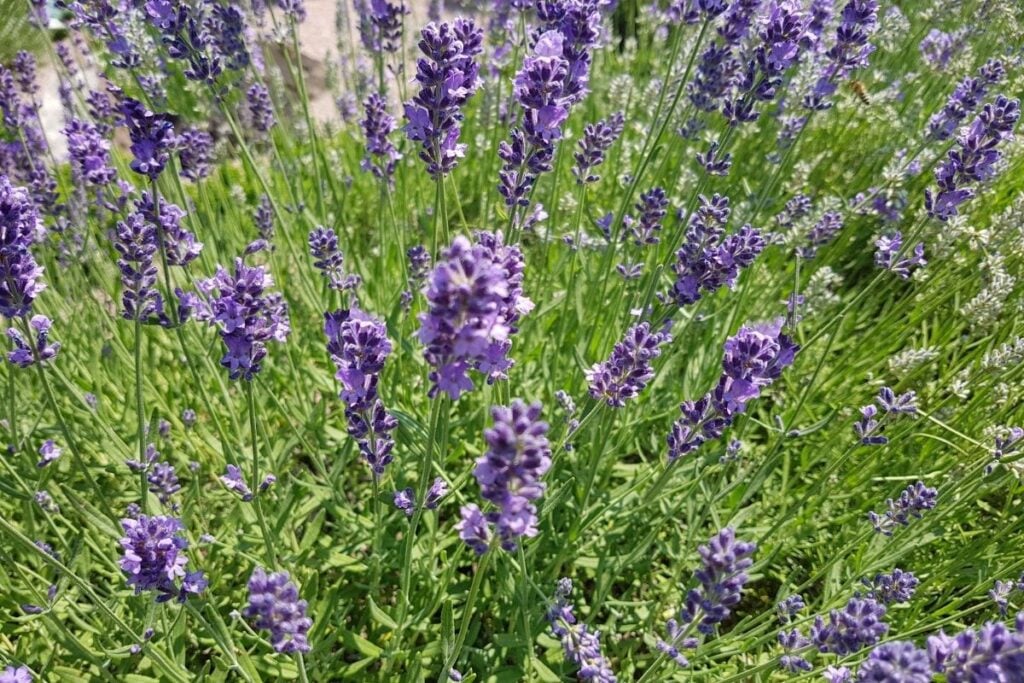
Lavender and ginger flowers look more or less the same.
The difference is in their colors.
Both require only 12 inches of space in your garden and thus, are great for small garden spaces.
Lavender can shade the gingers from direct sunlight.
Lavenders will receive a lot of warmth and adequate sunlight while guarding the gingers.
Both of them have strong smells and are great for deterring a lot of pests.
If you have other plants, lavender and ginger can repel them with their strong scent.
Legumes
Legumes like peas and beans are great for gingers.
Since gingers are heavy feeders, these plants can give the plant adequate nutrients.
Legumes are known to release and fix nitrogen to the ground.
Ginger further utilizes this nutrient to thrive.
Growing gingers in such soil help them develop well and have bigger blooms and rhizomes.
Besides nutrients, legumes can help sunlight pass through their canopy and reach the ginger beds.
So, gingers will receive dappled sunlight to flourish in the long run.
Lemongrass
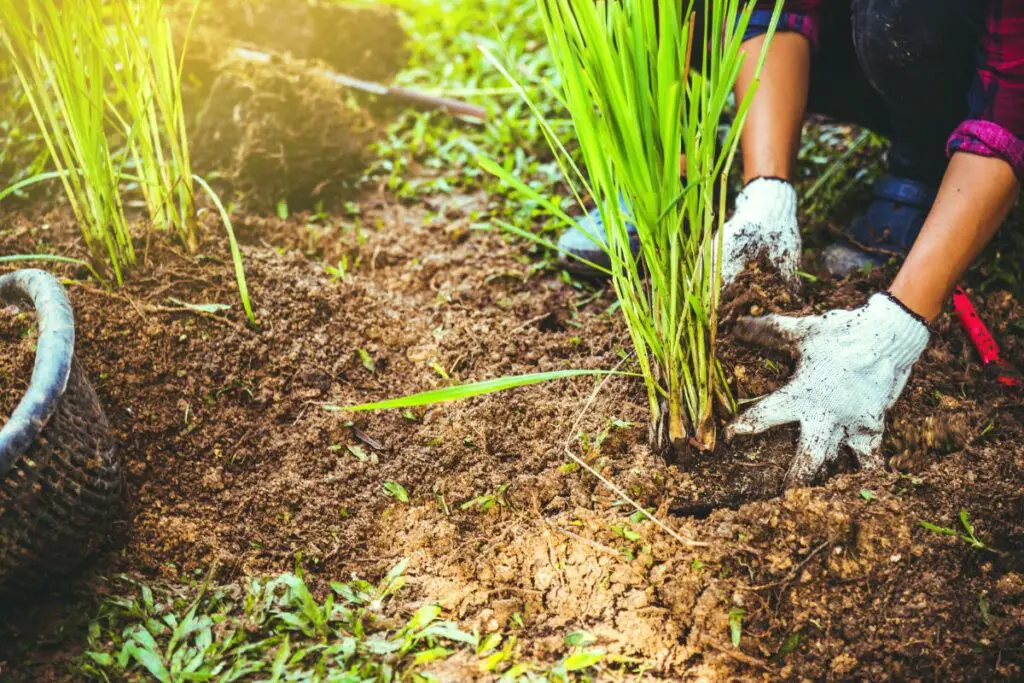
Lemongrasses are also used for various culinary purposes, especially in Asian and Indian dishes.
Lemongrass is also used in tea like ginger.
Besides, lemongrass has the same soil requirements as ginger.
Both are from tropical areas and thrive best in well-drained fertile soil.
So, you may plant them together with the same soil type.
Another advantage gingers can get from lemongrass is that it can create a proper shade for the ginger plants.
So, gingers will remain safe from the direct sun.
Gingers have a smell that repels lots of insects.
So, lemongrass will rarely get attacked by any pests.
Planting lemongrass before ginger is also good for gingers.
After planting lemongrass, if you plow the soil, it will release the essential oil.
This oil kills pests and pathogens from the soil.
After that, you can plant ginger without any such risks.
Nasturtiums
Nasturtium and gingers would be excellent companions for each other.
Nasturtiums can get affected by pests during their growing time, especially by aphids.
They prefer these plants and swarm over there.
To prevent such conditions, plant ginger with nasturtiums.
Ginger’s strong smell can repel many bugs and protect your nasturtiums from infestation.
Similarly, nasturtiums also benefit gingers by giving them sufficient shade and protection from the scorching sun.
Pigeon Pea
Pigeon pea will also help ginger in many ways.
Since they are also a member of the legume family, they release nitrogen in the soil, which the ginger plants further use.
It helps them to grow and thrive better.
You can trim off the pea plant and use them to make mulch for the ginger plants.
The mulch will suppress weed growth and add nutrients to the soil after breaking down.
Pigeon pea plants are relatively taller than ginger.
As a result, pigeon peas can shelter the ginger plants and protect them from sunburns.
While harvesting gingers, the plants close to them can get damaged.
This risk is less for the pigeon pea plants.
Spinach
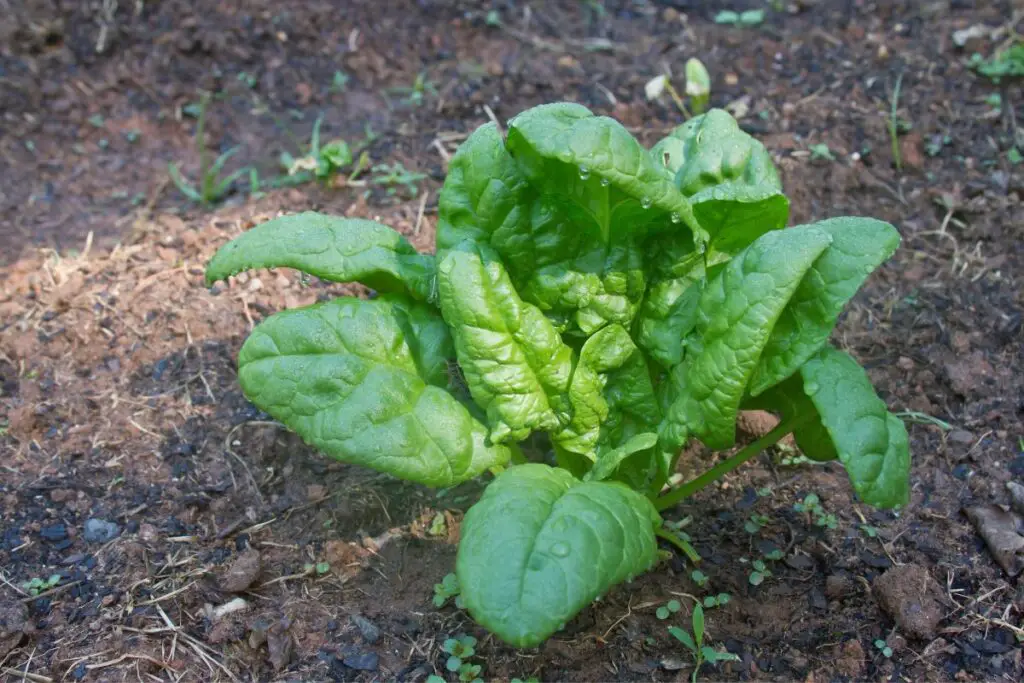
Spinach can get attacked by several pests during the growth phase.
Growing ginger as a companion can save spinach from such infestations.
Gingers have a strong smell that is detested by bugs.
So, if you grow them a bit close to each other, there won’t be any bugs in your spinach.
At the same time, spinach can also be beneficial to gingers.
Since they are groundcovers, spinach can suppress weed control to a great extent.
Other leafy greens besides spinach are lettuce and kale.
Turmeric
Another healthy and spicy vegetable great as a ginger companion is turmeric.
Both of them have common requirements.
Both ginger and turmeric can be grown in well-drained and nutrient-rich soil.
Both of them enjoy consistently moist soil to thrive in the long run.
Both prefer filtered sunlight and hate the scorching sun as direct sunlight can dry up turmeric and ginger.
Dried turmeric and ginger are less useful than healthy ones filled with moisture.
However, if anything goes wrong, you will put both of them at risk.
So, make sure the requirements are correct.
I grow turmeric and ginger together, and they are doing great.
Other companions include galangal, cardamom, palms, teak, orchids, calla lily, and canna lily.
What should I not plant with ginger plants?
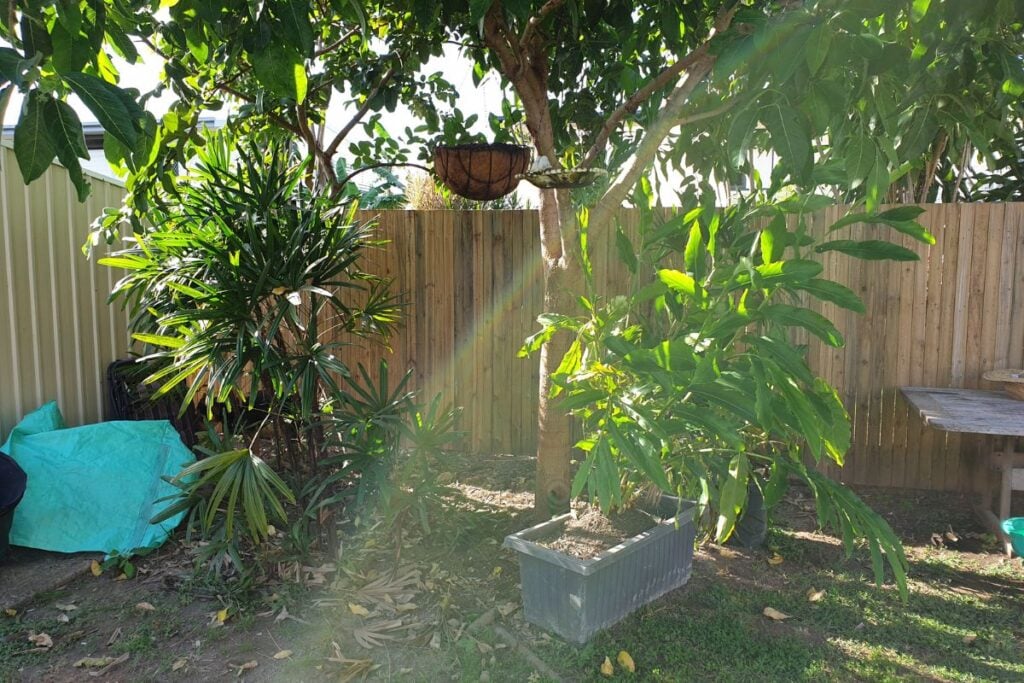
Till now, we have discussed the good companions of ginger plants.
As you have seen, there are a lot of options.
But, you should also know which plants should not be grown close to ginger or in the same bed so that you don’t make a mistake.
Walnut trees are not at all a good companion for gingers.
Walnut releases a toxin called Juglone.
This toxin is very harmful to ginger growth.
Not only just ginger but walnut trees are also a bad companion for a lot of other plants due to their toxicity.
Once I made this mistake and lost some of my plants.
Eggplant and tomatoes are also not that good for gingers.
What makes ginger a better companion?
Just like other plants are great companions for gingers, ginger is also a great companion for other plants:
- Ginger doesn’t need full sun and thus can stay happy in the shade of the tall trees.
- Since gingers have a strong, pungent smell, they can repel many pests and keep plants bug-free.
- Ginger reaches only 3 feet in height and thus, is perfect for growing under tall trees.
- Ginger is easy to grow and hence needs less time to maintain.
- Ginger doesn’t negatively affect any plant, thus being a great companion for most plants.
- The soil required for gingers is also the same for many other plants.
Final thoughts
Gingers are easy to grow. But since growing them alone can be boring, you can make gardening interesting by adding some ginger companions.
You can add any random veggies. The best companions for gingers are peppers, cilantro, fruit trees, legume families, lemongrass, leafy greens, turmeric, nasturtiums, and hibiscus. The bad ones are walnuts, eggplant, and tomatoes.
So, before you add companions, research the topic. I hope this article can help you in a lot of ways.
Reference: Ginger Production, Texas AgriLife Extension, USDA, Wikipedia
